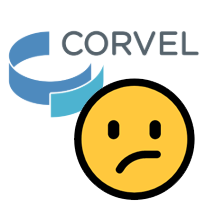Do Not Send RFAs With Bills
When treating an injured worker, a provider must fax the Request for Authorization (RFA) to the fax number designated by the claims administrator. RFAs should never be sent with a bill.
Often claims administrators delegate bill review and utilization review (UR) to different entities. A provider who fails to fax RFAs to the correct destination is out of compliance with RFA regulations which require providers to fax these requests using the fax number issued by the claims administrator.
Claims Administrator Responsibilities
California Labor Code Section 4610 requires claims administrators to establish UR programs to determine the medical necessity of providers’ requested treatments.
These UR programs are subject to recently strengthened rules regarding their accreditation and objectivity. Claims administrators may employ physician or non-physician reviewers, or contract with utilization review organizations. These designated in-house reviewers or contracted UR entities are the only appropriate recipients of provider RFAs.
California Code of Regulations (CCR) Section 9792.9.1 requires claims administrators to provide and maintain a fax number specifically for authorization requests, as well as a phone number manned from 9 am to 5:30 pm.
Claims administrators must also maintain a voicemail inbox, fax number, or email address for after-hours authorization requests.
Bottom line: the regulations require claims administrators to establish and maintain designated routes and destinations for RFAs — which providers are expected to utilize.
Provider Responsibilities
Unfortunately, identifying the correct destination for RFAs isn’t always easy.
Different claims administrators use widely varying processes for handling RFAs. Some require providers to send RFAs directly to a contracted UR entity. Others prefer the RFA go to the handling insurance adjuster. California’s State Compensation Insurance Fund (SCIF), for example, has no less than 8 different handling offices, each with their own UR department to which providers must fax RFAs depending on the region.
Like much else about workers’ comp, this puts a burden on the provider. Regardless, providers are responsible for identifying the correct RFA route, and contacting the claims administrator if necessary.
Be sure to send RFAs to the designated destination, and remember the following rules:
- Providers must use DWC Form RFA
- The RFA must identify the employee and provider
- The RFA must specifically identify the requested treatment
- Providers must include relevant supporting documents
- The RFA must include the treating physician’s signature
Bill Review is not UR
Put simply, RFAs and bills are in totally separate spheres.
Providers must treat RFAs and bills differently, and submit them separately. RFAs and bills are subject to completely different processes, rules, and timeframes. Payors handle each differently, using professionals with different tools and skill sets.
While the purpose of UR is to determine medical necessity, the purpose of bill review is to determine reimbursement. For the latter purpose, claims administrators utilize clearinghouses or their own in-house Bill Review.
Crucially, providers must submit bills to the correct entity, or risk the bill getting lost or delayed. Remember: if an original bill doesn’t reach the correct destination within 12 months of the date of service, the claims administrator may legally refuse to pay.
Since providers must use the routes the claims administrator designates for requesting authorization and submitting bills, respectively, there’s only one scenario in which a provider may submit an RFA with a bill: when the claims administrator requires it.
However, such a requirement is rare.
That’s why our Claims Administrator Directory catalogues and differentiates between claims administrators’ Bill Review and RFA contact information. It’s just one way we try to ameliorate the many complications of workers’ comp, so that RFAs and bills get exactly where they need to go.
Providers, know your responsibilities. Know where to send your RFAs and bills, and follow the (wildly complex) rules. It’s the only way to protect your office’s revenue.
Make sure you’re sending RFAs, bills, and appeals to the right place. Our Work Comp Wizard includes our Claims Administrator Directory, as well as our popular OMFS Calculator. Try the Wizard for free, today.
TRY THE WIZARD
DaisyBill provides content as an insightful service to its readers and clients. It does not offer legal advice and cannot guarantee the accuracy or suitability of its content for a particular purpose.

.gif)

